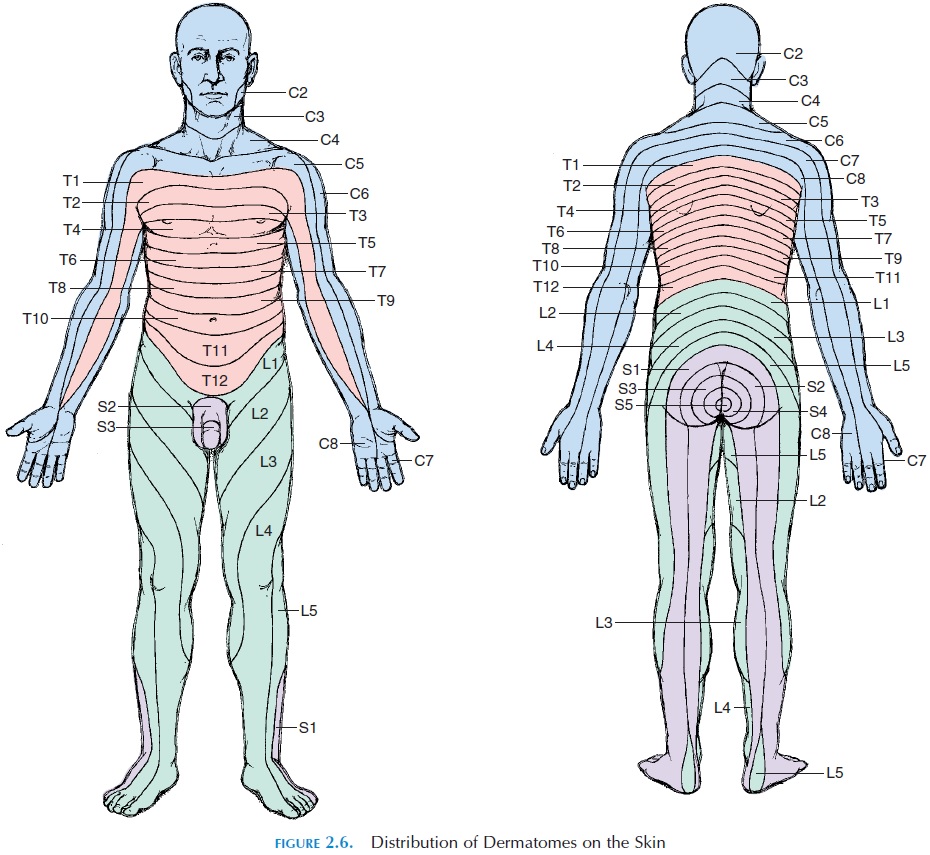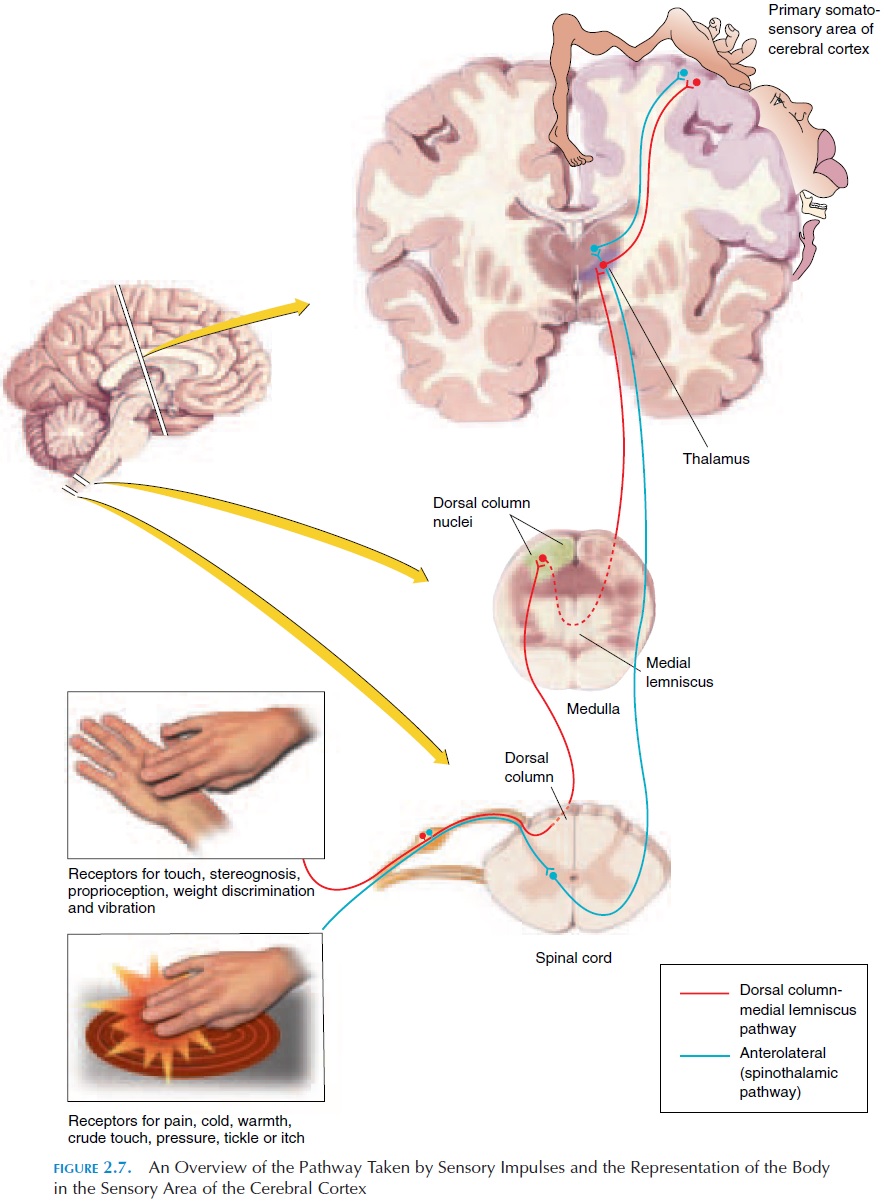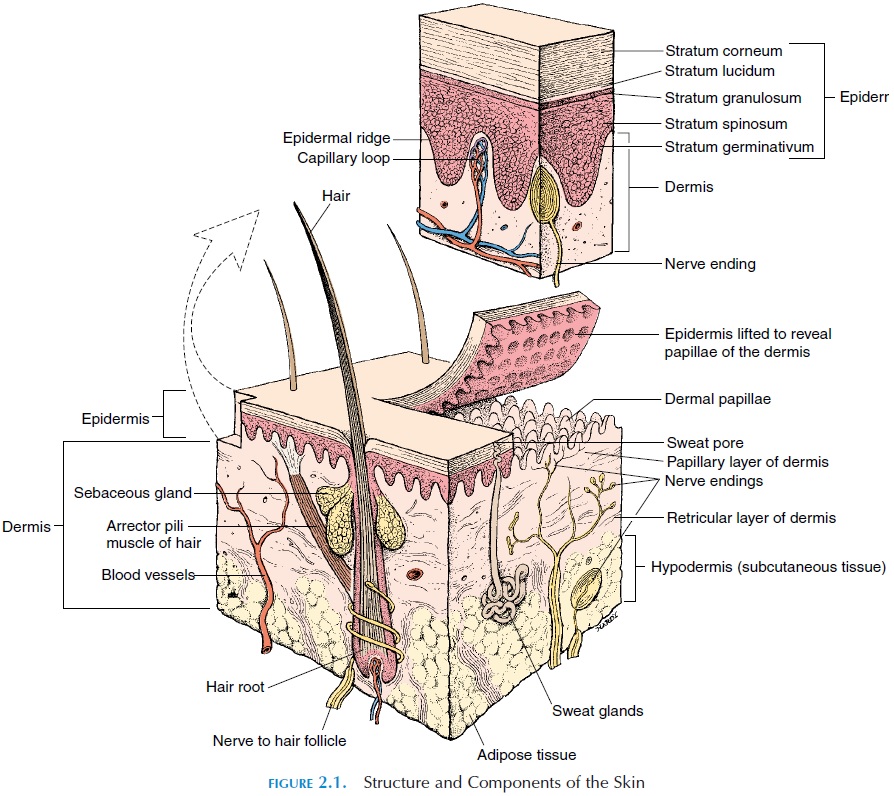Chapter: The Massage Connection ANATOMY AND PHYSIOLOGY : Integumentary System
Nerve Supply to The Skin
NERVE SUPPLY TO THE SKIN
The skin is supplied by autonomic nerves, which innervate the blood vessels and glands in the skin. Briefly, au-tonomic nerves supply glands, blood vessels, and in-ternal organs. There are two types: sympathetic and parasympathetic.
Sympathetic stimulation and circulating epineph-rine and norepinephrine produce vasoconstriction. There are no known vasodilator fibers to the cuta-neous blood vessels; dilation is caused by a decrease in the constrictor tone of the sympathetic nerves. Chemicals, such as bradykinin from sweat glands,histamine from mast cells, and vasodilator metabo-lites from injured cells, have a direct effect on the cal-iber of blood vessels.
In addition to the autonomic nerves, there are nu-merous sensory receptors, which respond to sensa-tions such as touch, pressure, pain, cold, and warmth. Mild stimulations, especially if produced by some-thing that moves across the skin, cause itching and tickling sensations . Any given receptor signals or responds to only one kind of cutaneous sen-sation. The receptors may be free nerve endings or modified to form special structures that have a sur-rounding capsule or expanded tips. Some are found wound around hair follicles. The number of sensory receptors per unit area varies from region to region. More receptors are present in areas, such as the face, lips, and fingers, that are more sensitive to sensations.

The receptors are continuous with sensory nerves. Sensory nerves from the skin take the impulses gen-erated in the receptors to the central nervous system. The sensory nerves from a specific area of the skin en-ter a particular segment of the spinal cord. The area of skin supplied by the nerves from a particular spinal segment is known as the dermatome. The der-matomes of the different spinal nerves throughout the surface of the body have been traced (see Figure 2.6). These patterns are of clinical importance as damage to a spinal nerve results in loss of sensation in the specific dermatome.

The intimate association between the skin and the brain can be appreciated by the fact that the brain has a map, representing the entire body, in the area that perceives sensations. There is a larger represen-tation for regions that are more sensitive than others (see Figure 2.7). The pathway taken by impulses gen-erated by the sensory receptors of the skin is also very specific. This is why we are able to locate exactly—up to a few millimeters—where we have been touched on the skin. Many consider the skin an extension of the brain through which interactions between the mind and body can be made by touch. It is interest-ing to note that during prenatal development, both the skin and the nervous system are derived from the same embryonic layer, the ectoderm (in the embryo, all the structures of the body are derived from three layers—ectoderm, mesoderm, and endoderm).

Related Topics